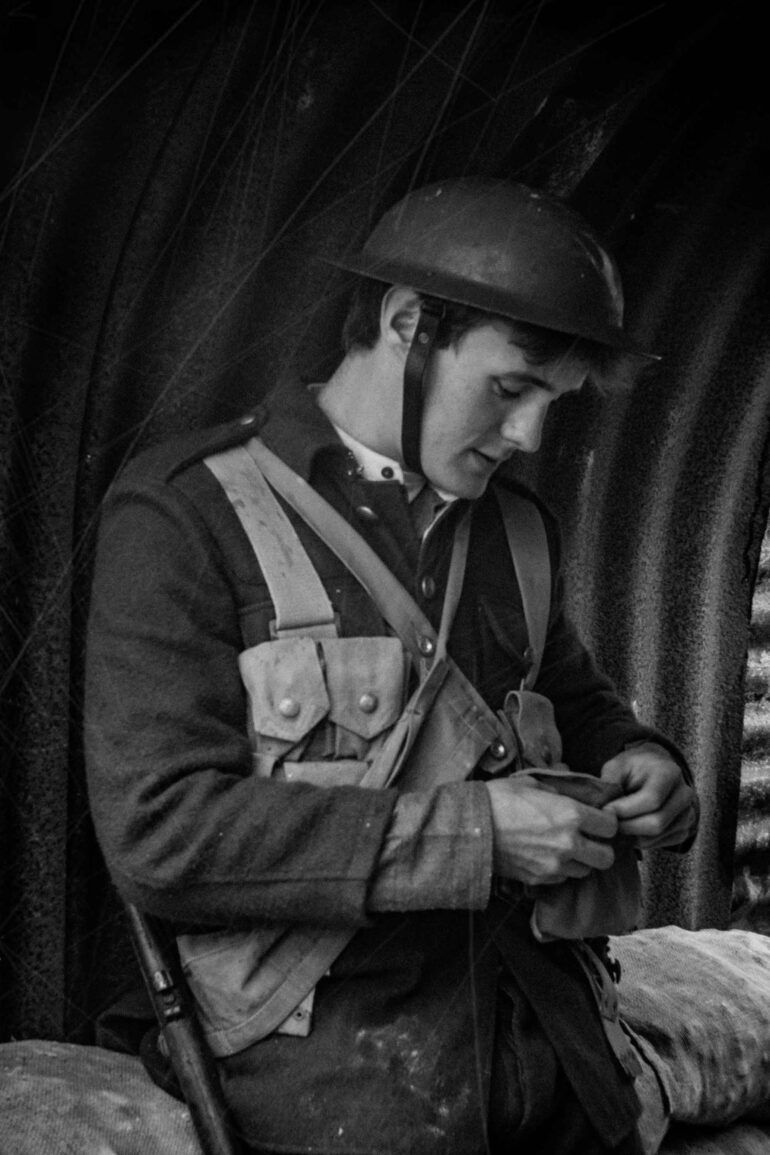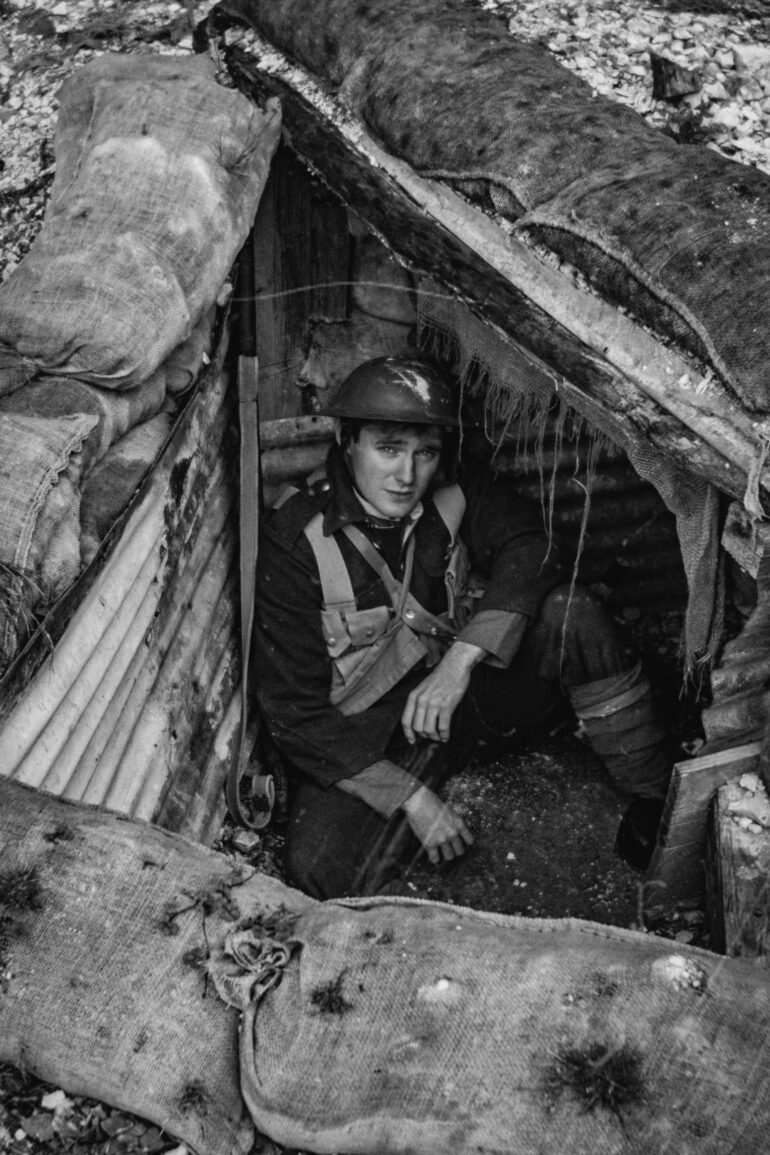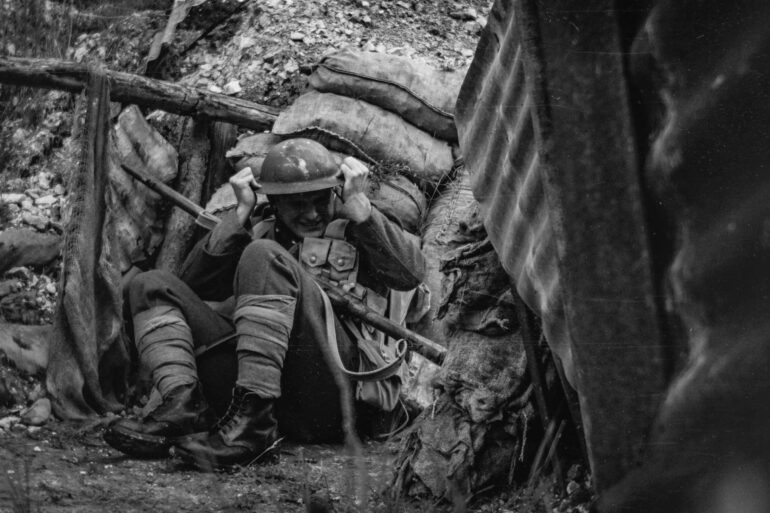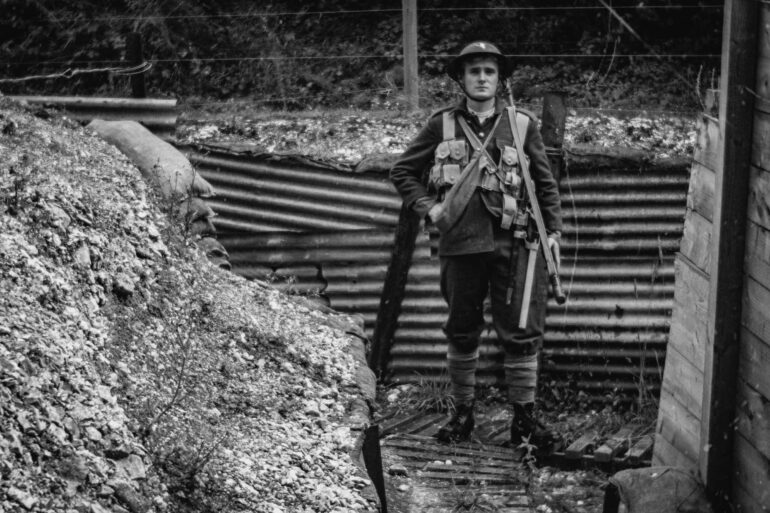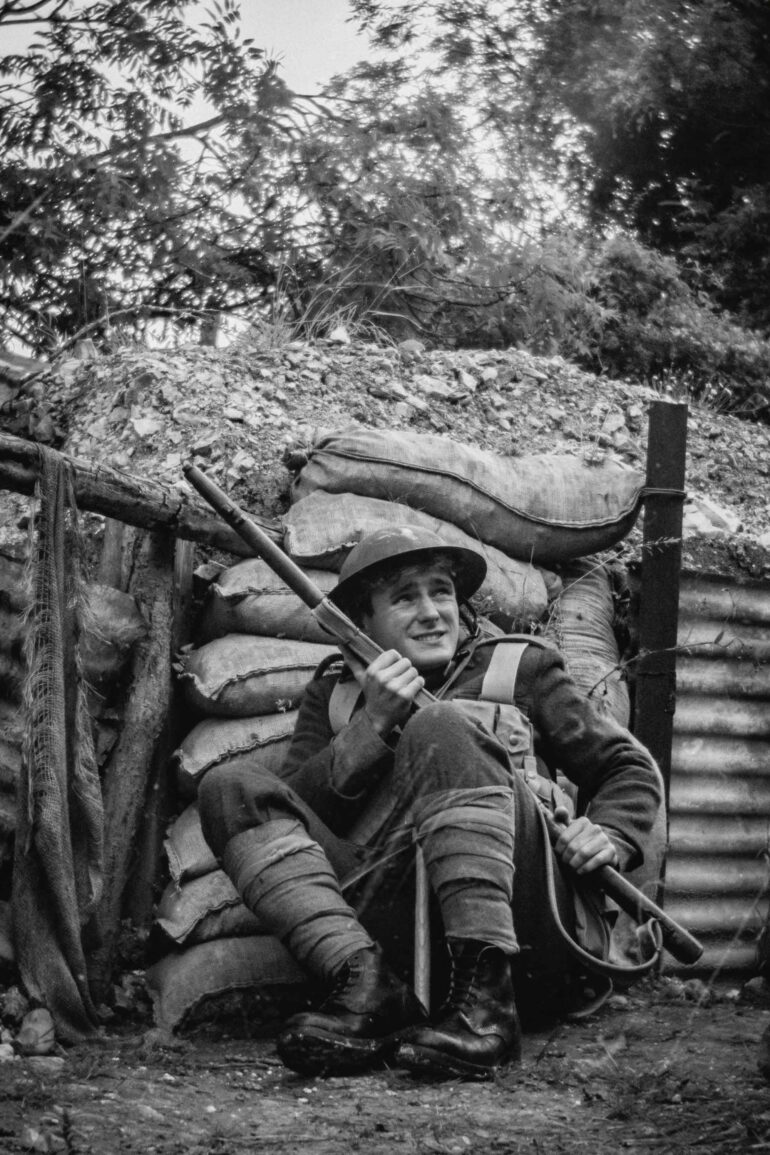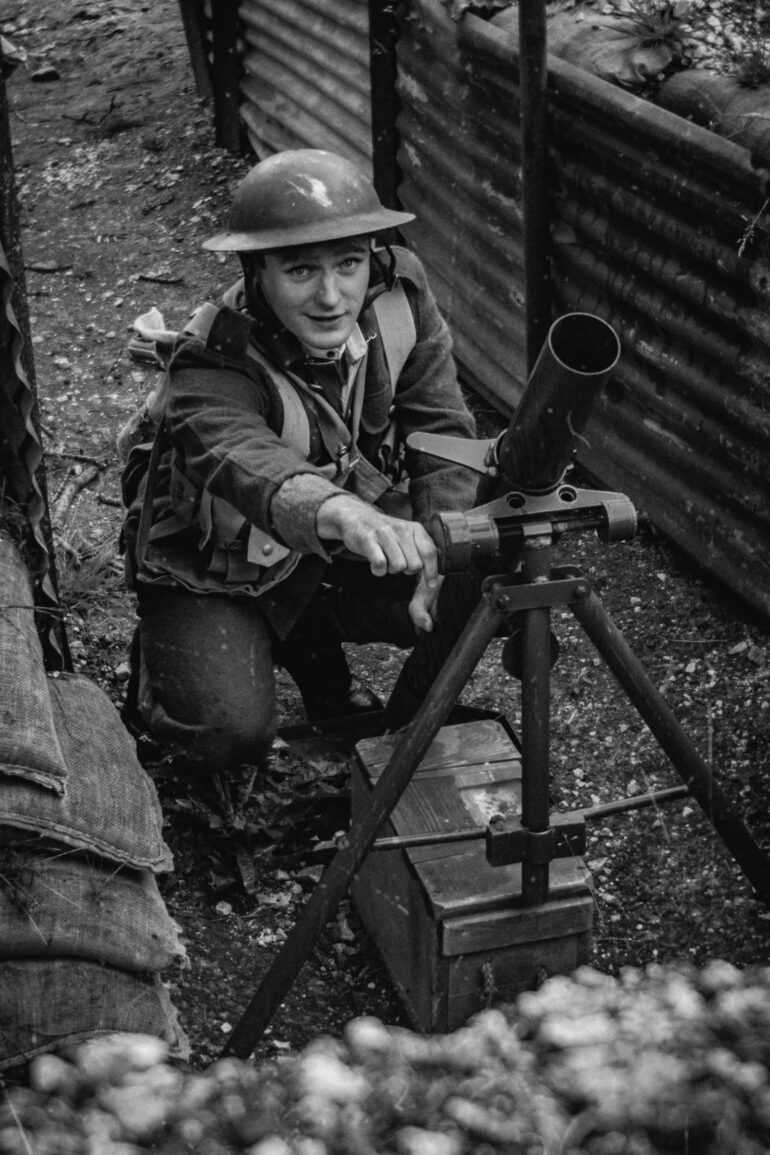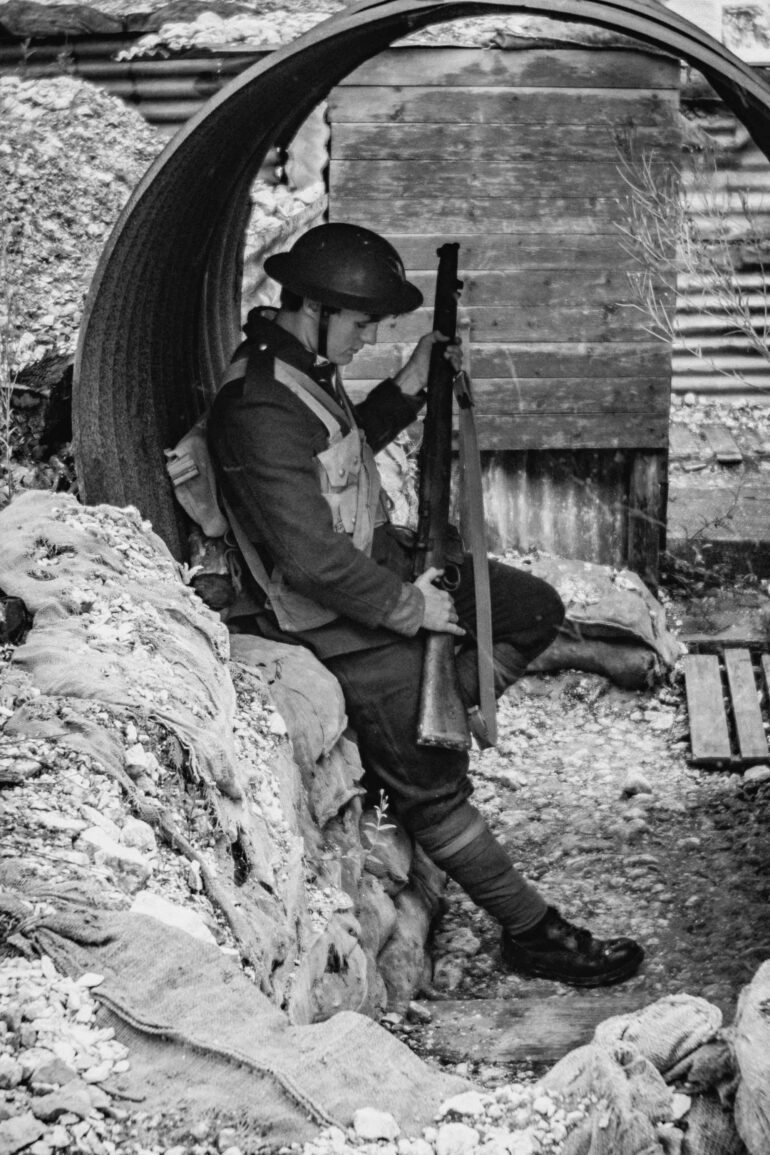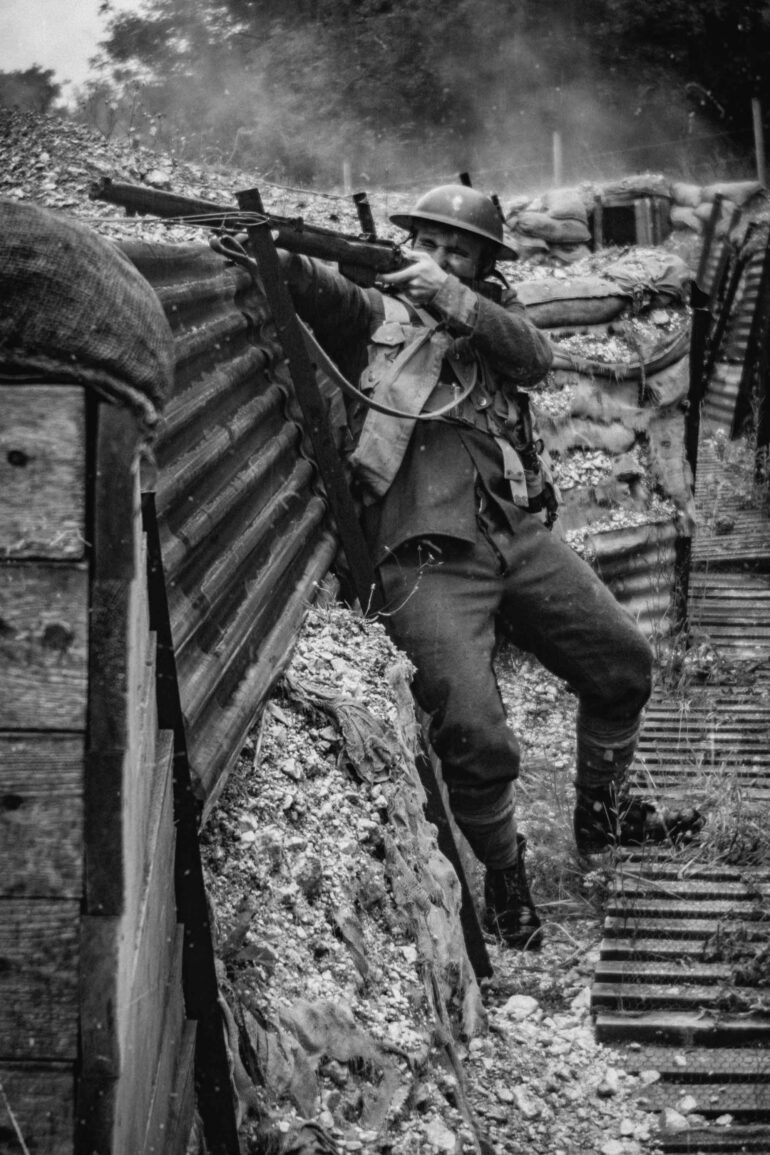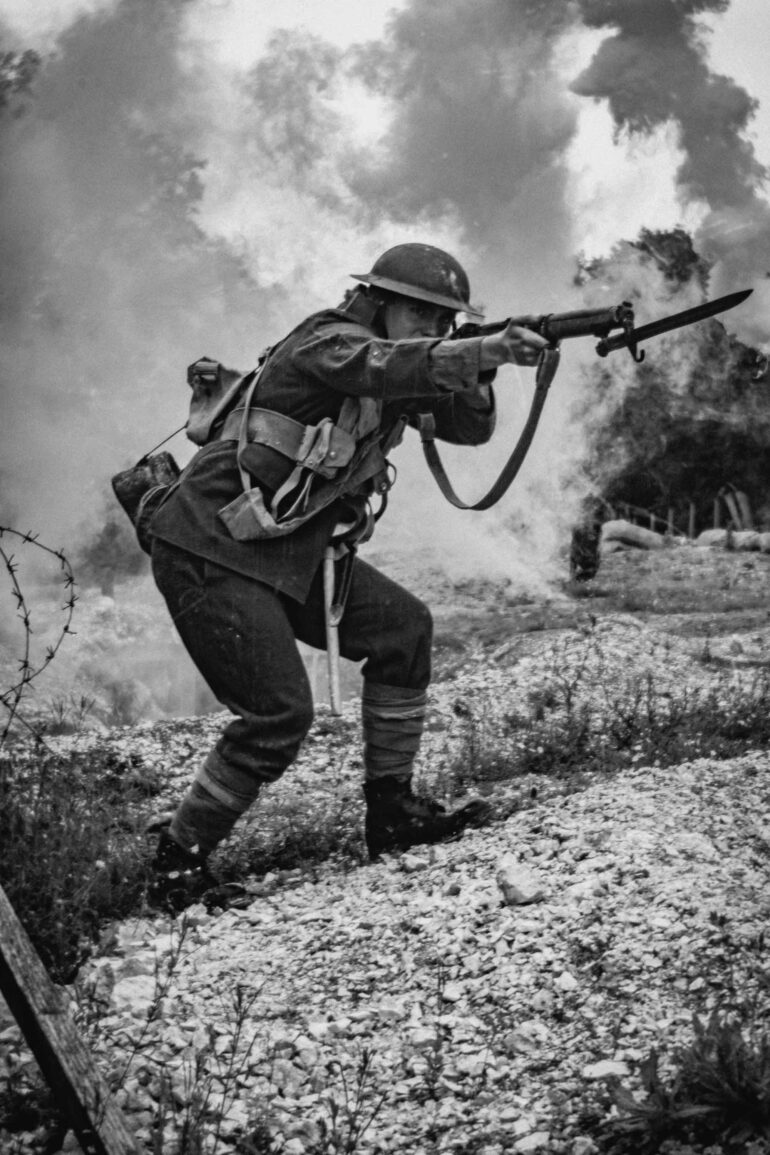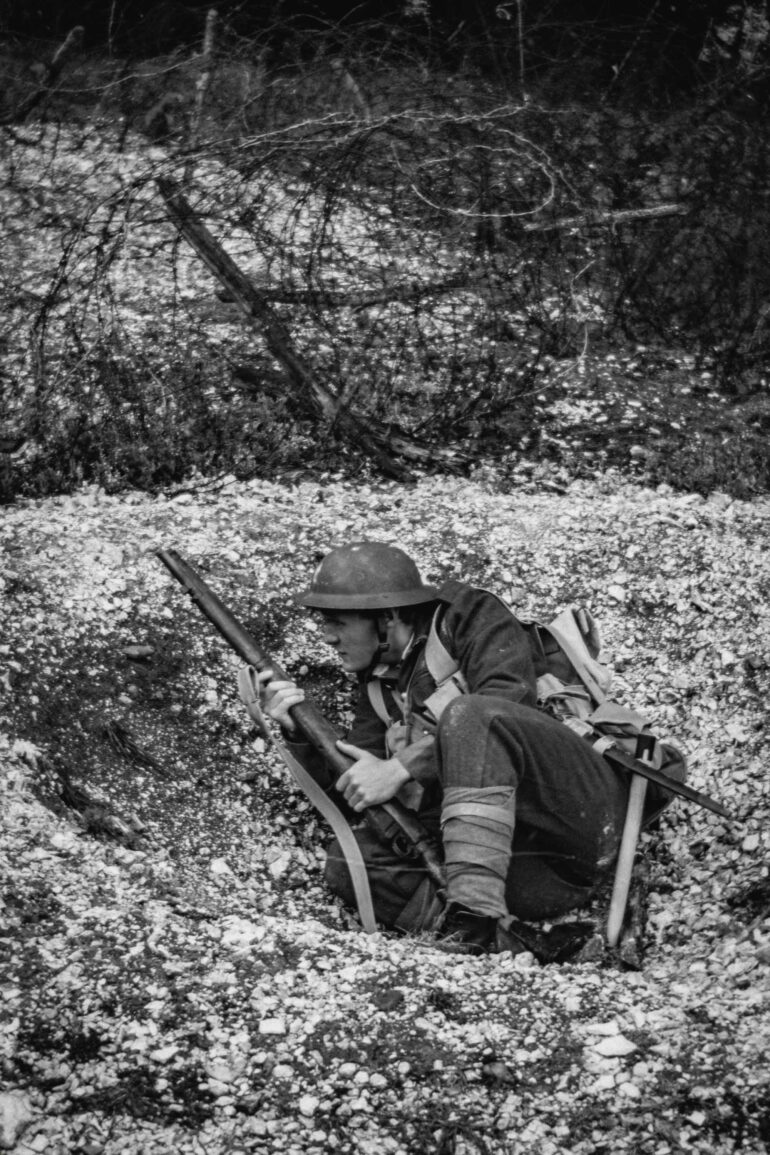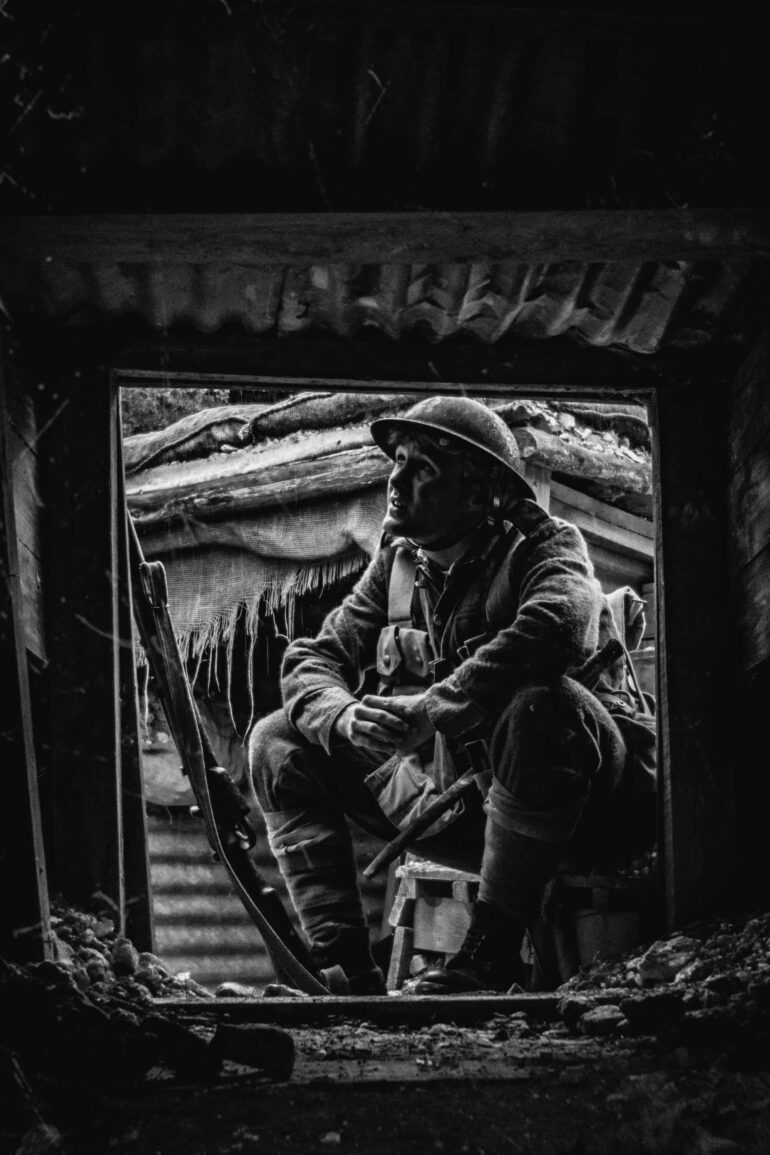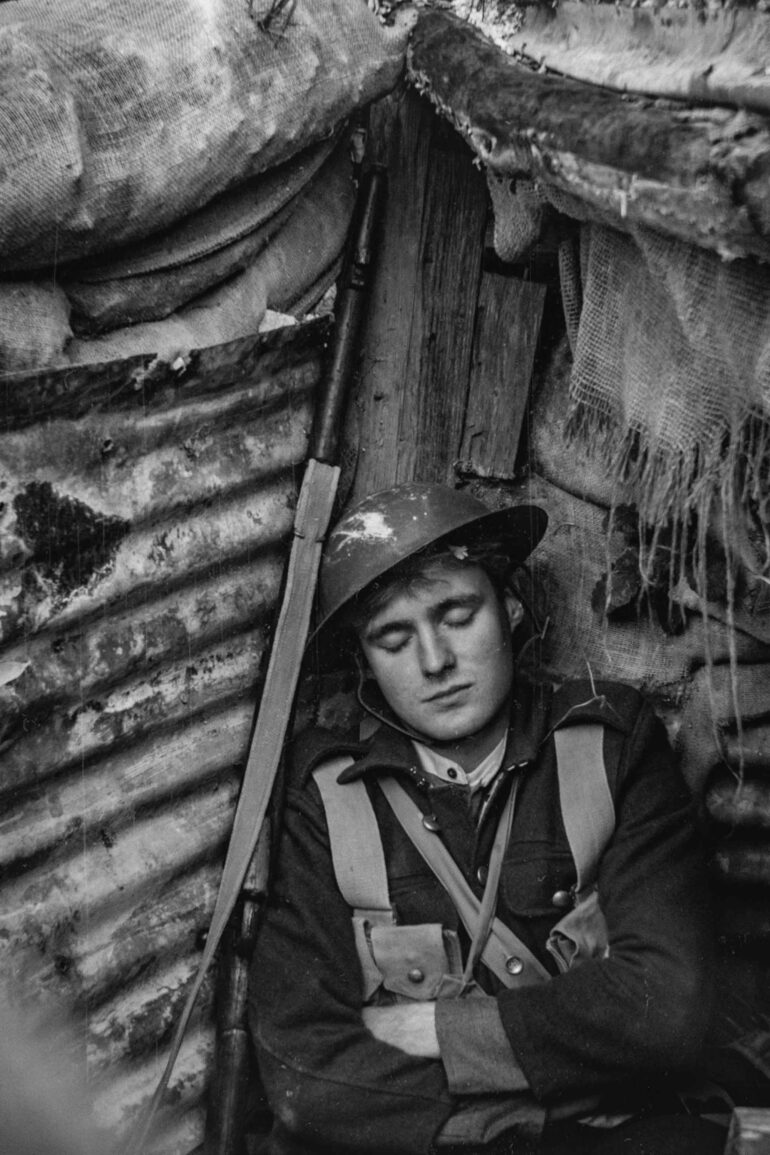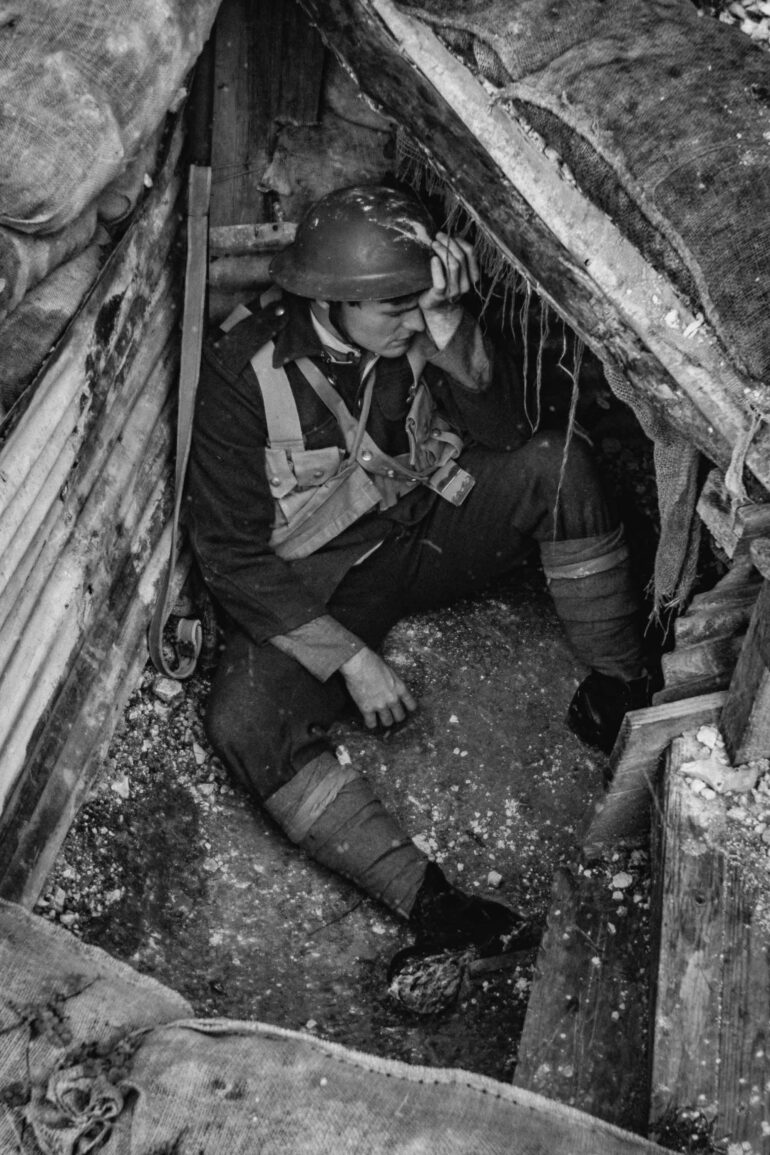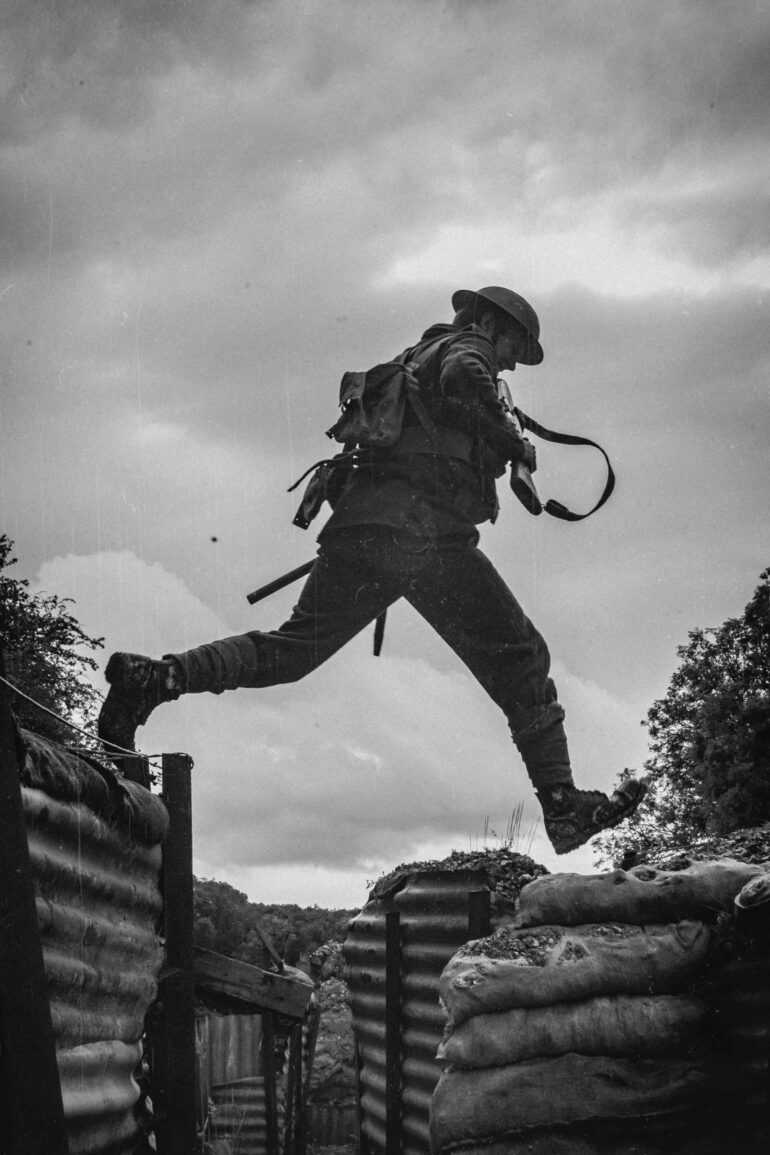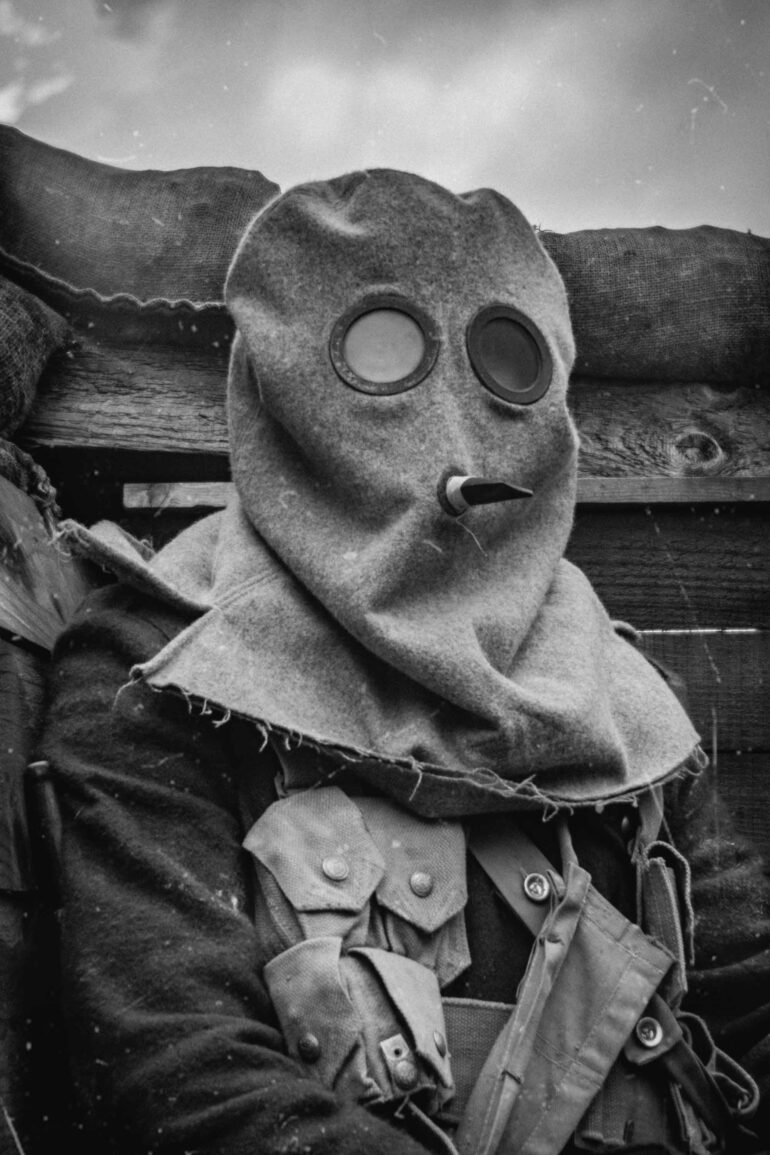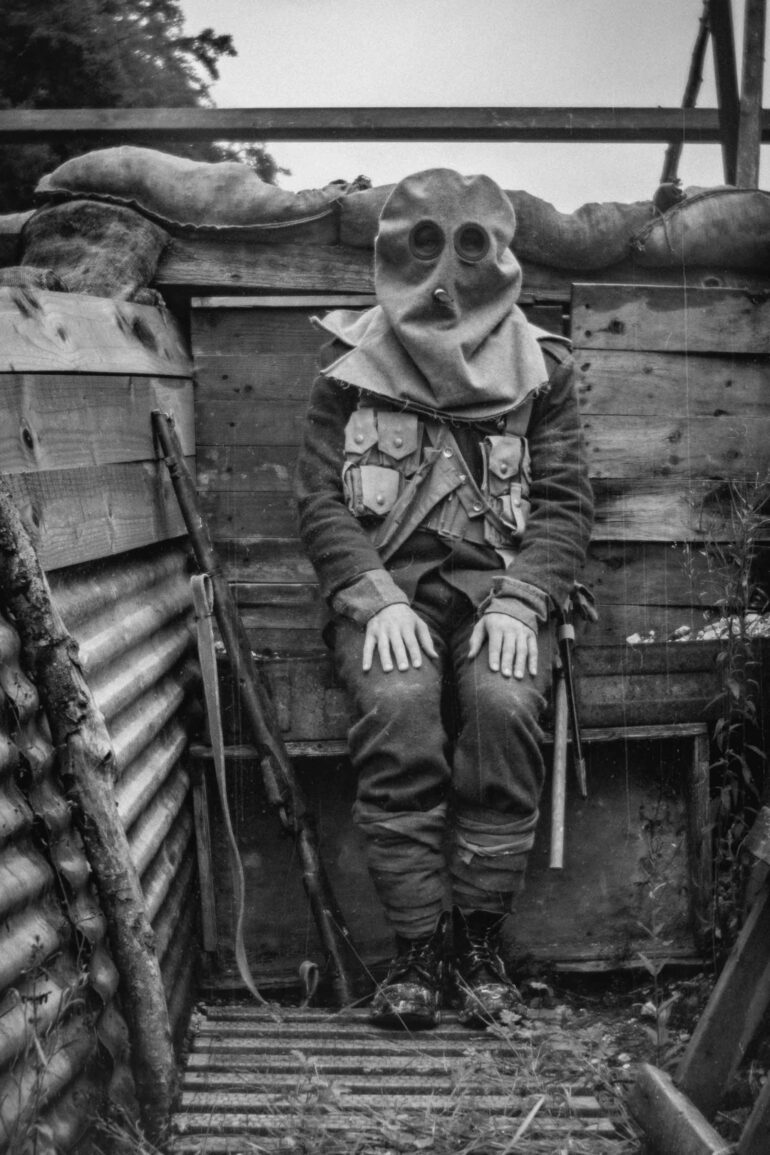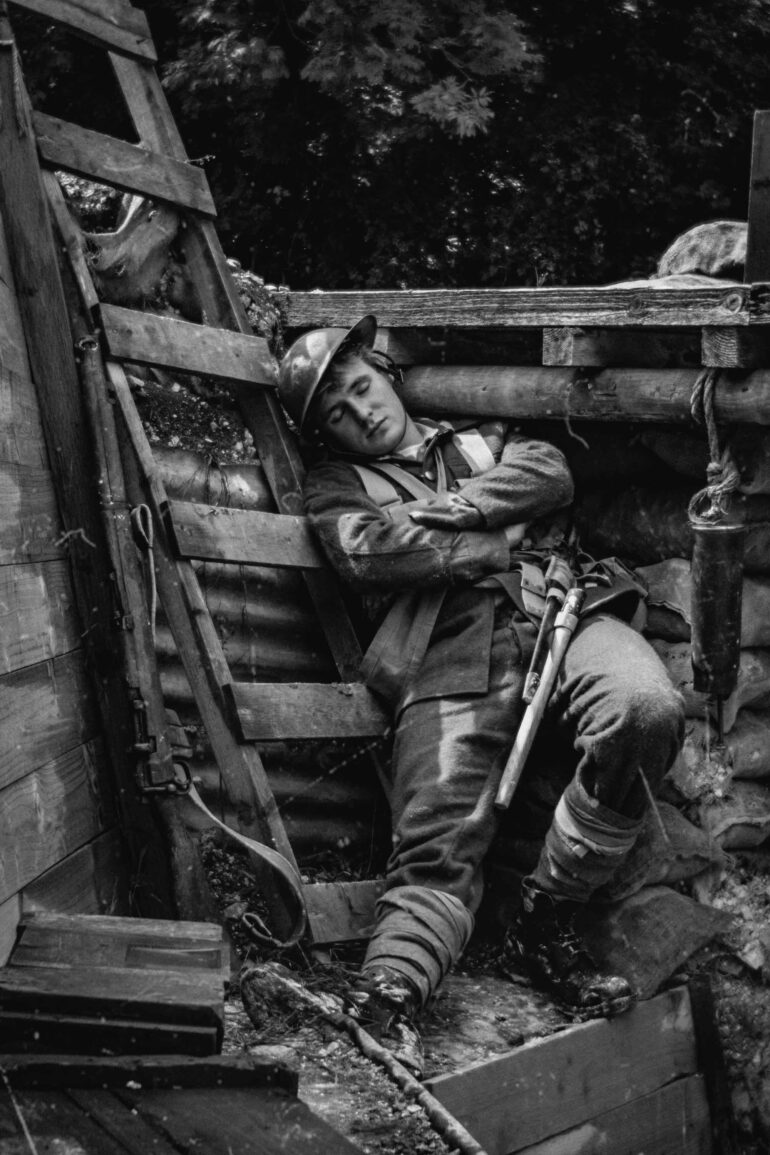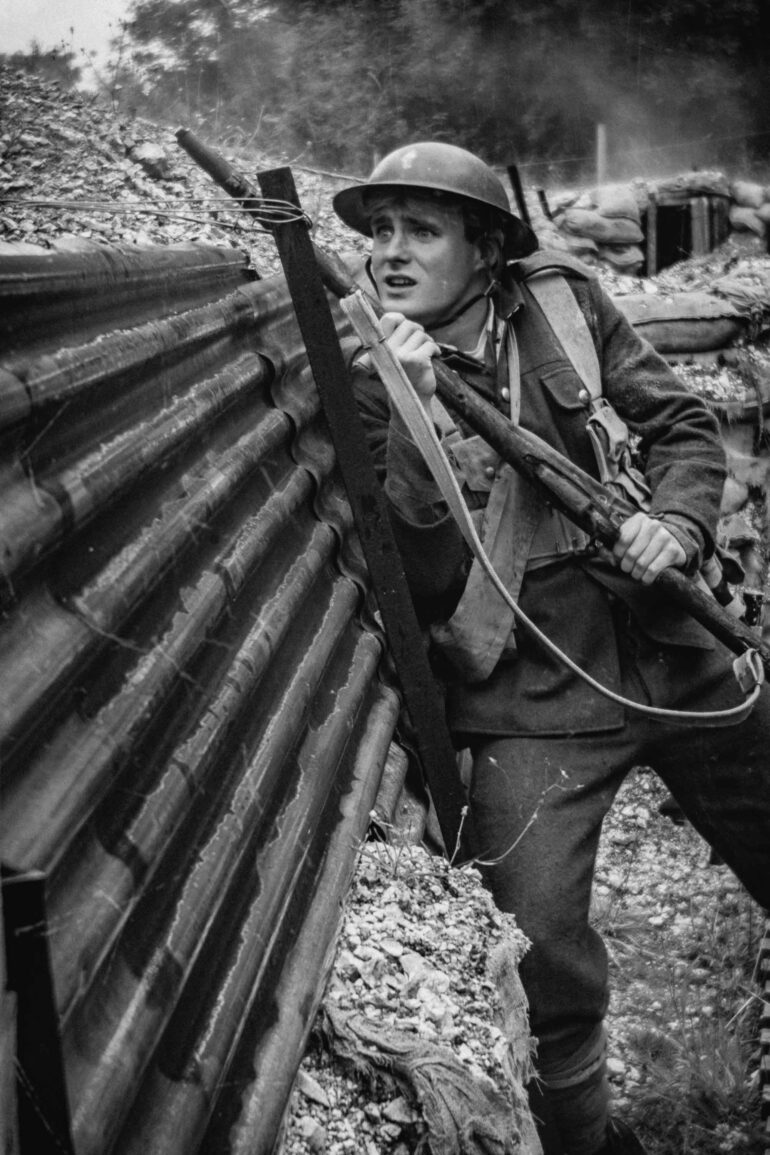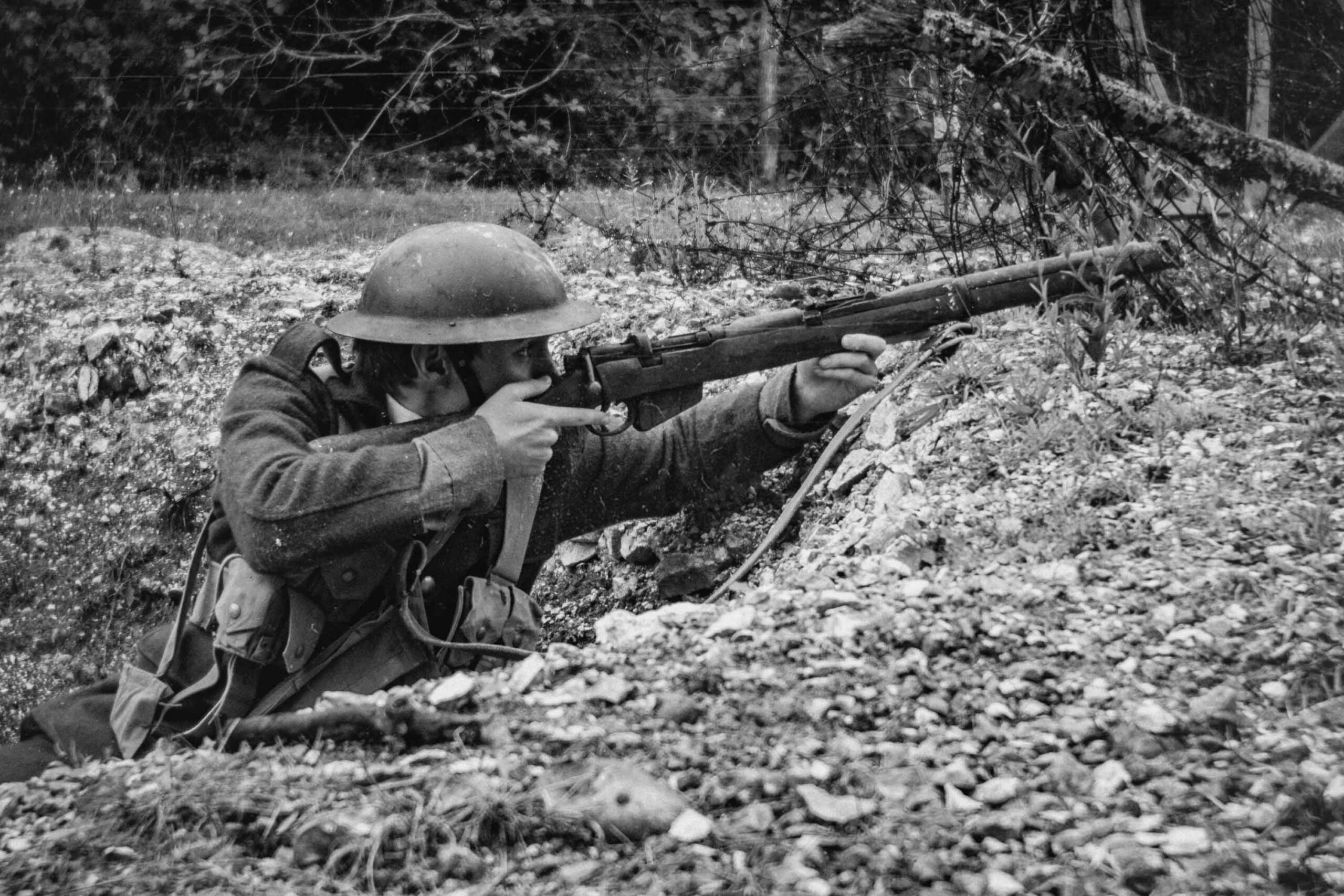“This lens was removed from a Kodak Vest Pocket Autographic camera, which was first released during the peak of WW1,” says photographer Tom Calton to the Phoblographer in an interview. “It’s small size and simple operation meant that, for the first time, just about anyone could document their lives through photography. It also meant that it was a common choice for soldiers heading off to war, as they could quite easily sneak them onto the front lines and use them without drawing too much attention.” Tom created a series of images using just this lens attached to his Sony a7 IV all for Remembrance Sunday 2023. Why this lens? Well, it comes from his affinity for history.
All images by Tom Calton. Used with permission. For more, please visit his website.
Tom was inspired by the images that were captured on the front of the war. “At the time, photography on the front lines was prohibited so they took a big risk by doing this,” he explains. “But, we should be grateful that they did because it’s these photos that allow us to peer back at what day to day life in the trenches was really like over 100 years later.” Indeed, war photographers even today take some very big risks.
Due to his love of history, Tom decided to have some fun and do this project. He has a particular love the era around both world wars. But he’s also big on experimenting with old tech. Of course, vintage and antique lenses still can work with modern cameras with the right adapters and some tweaking. “I think the idea of combining the super old with the ultra-modern was a really fun creative concept to explore,” he related.
To make the images that Tom did, he took inspiration from the actual photographs that were shot. These, he felt, were much more authentic and gave a better view into the lives of soldiers. “Most of them weren’t career soldiers – they were just normal people, like you and I, caught up in the romanticism surrounding this war,” he states. “So, I wanted the photos to feel candid enough that (hopefully) they could pass for the real thing. Some of the scenes I captured were inspired by real photos, though most are artistic interpretations of the situations they would have faced.” He worked with actor Joshua Lendonon portraying a range of emotions to get the photographs.
These photographs are a recreation, of course. And they’re much different from the military portraits of photographers like Evan Baines, who spoke with us on how to photograph soldiers today. Tom’s work is meant to be an ode to the photojournalism done on the field. In the years after World War 1 and 2, the military used tons of different cameras. We’re very curious to see what Tom would make around photographs of World War II. Indeed, the Japanese Islands were something completely different. So too was Russia, Germany, and all the other fronts that World War II was fought on. Additionally, so much more tech was involved with airplanes, the Atomic Bomb, and so much more.
